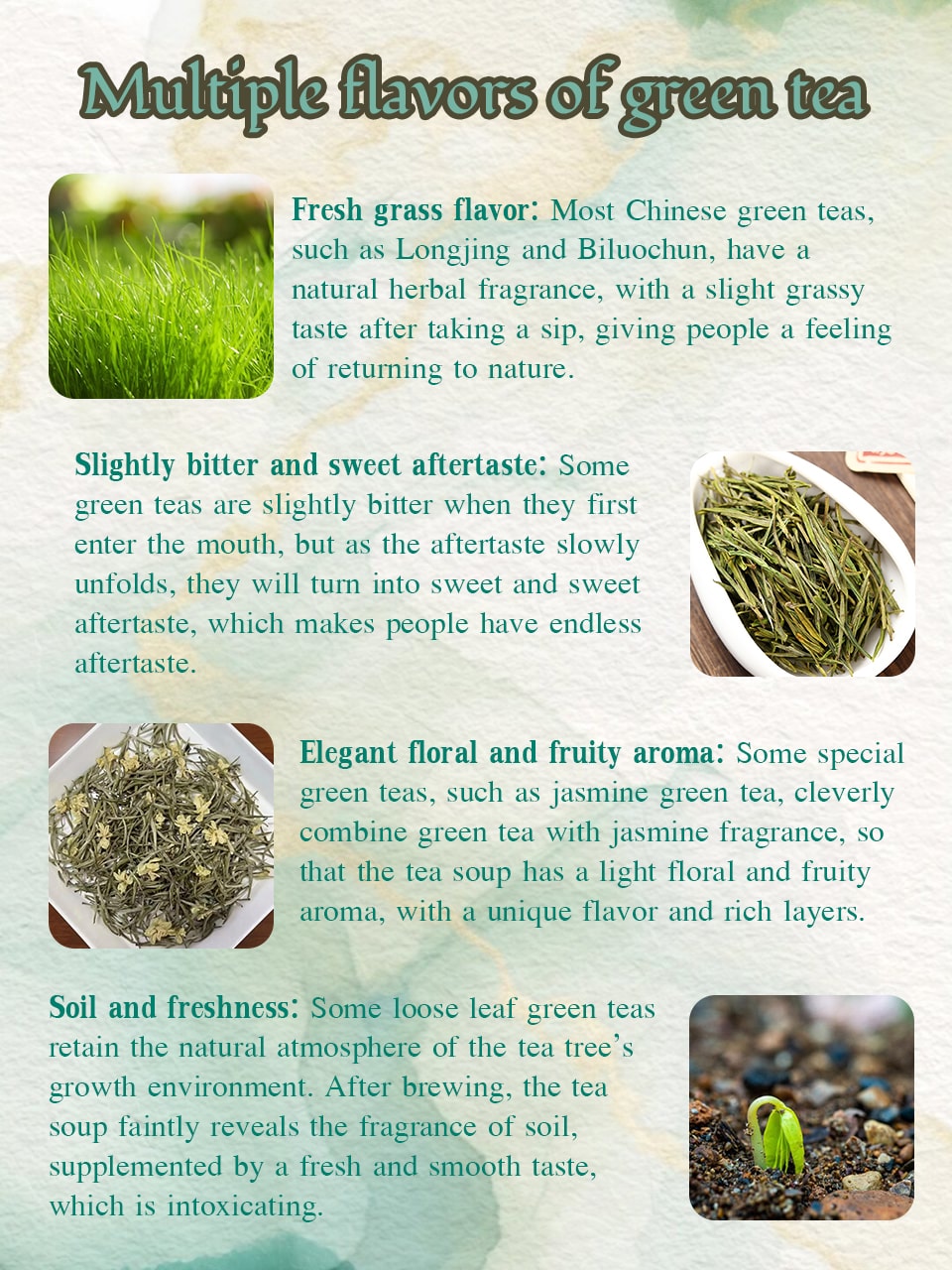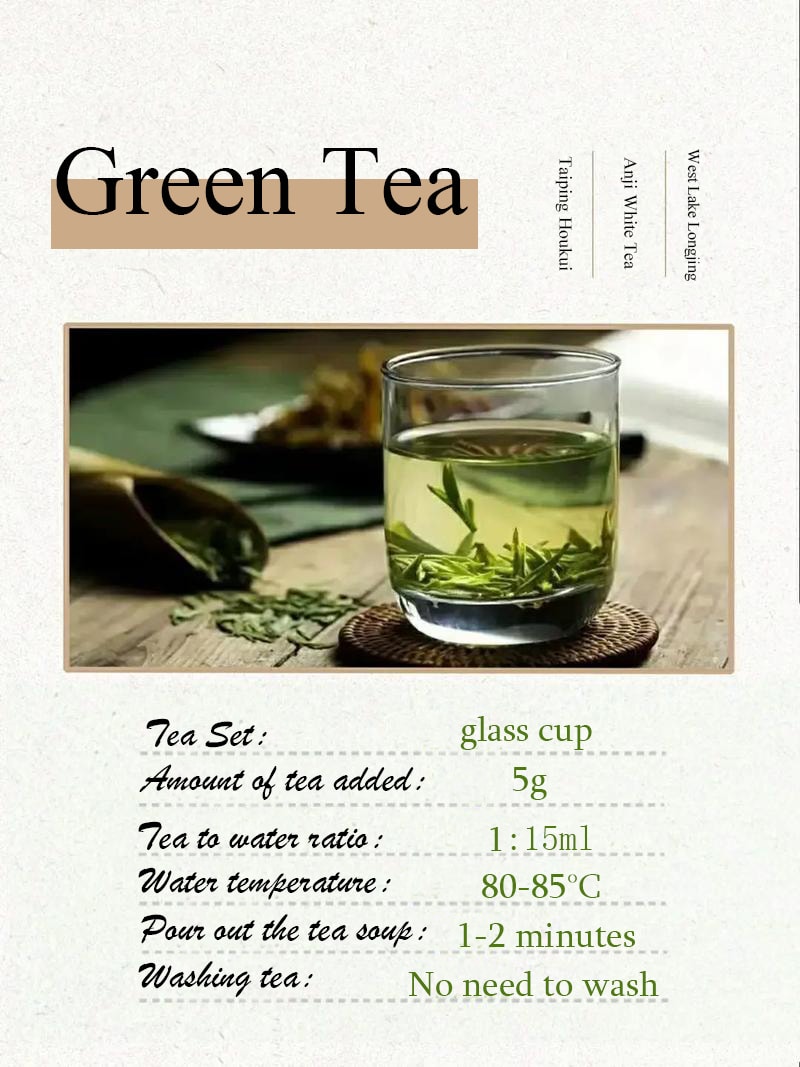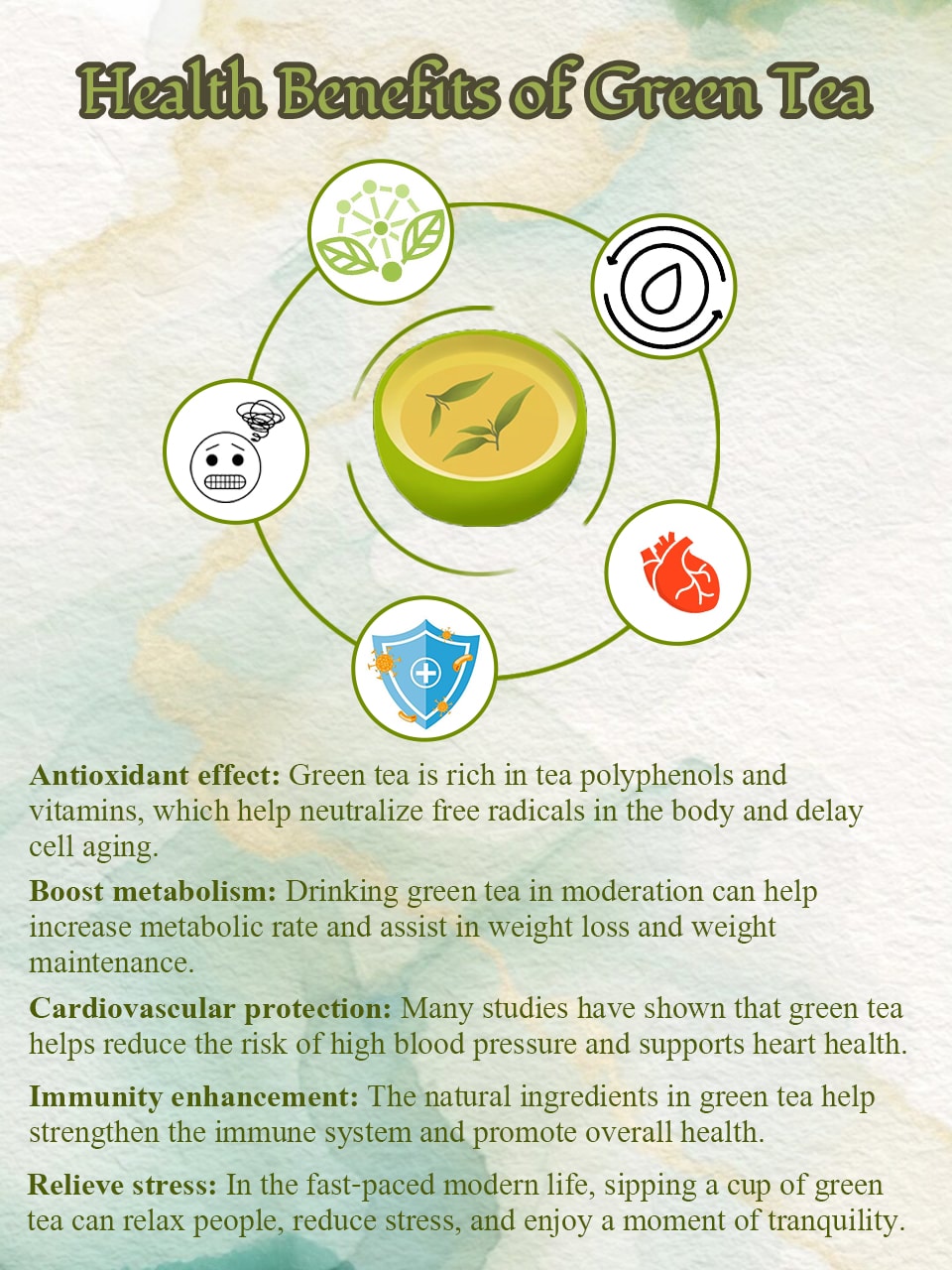
Green Tea Flavour: What Does Green Tea Taste Like? How to Taste the Best Chinese Green Tea?
liujiehangShare
As a treasure of traditional Chinese tea culture, green tea is not only famous for its refreshing taste and health benefits, but also for its rich and varied flavors that attract countless tea drinkers around the world. Premium green tea, known for its vibrant color and smooth taste, is a standout choice for tea enthusiasts. Have you ever wondered: What does green tea taste like? What is the flavor of green tea? This article will analyze the taste characteristics of green tea from the origin, production process, brewing techniques to tasting experience of green tea, and take you to experience the purest green tea flavor.
The origin and production process of green tea
Historical inheritance of Chinese green tea
Chinese green tea has a long history, and its origin can be traced back to the ancient Buddhist monks who introduced tea as a refreshing and self-cultivating drink to the people. After thousands of years of development, high-quality green teas such as Longjing, Biluochun, Huangshan Maofeng, and Xinyang Maojian have come out one after another, forming a unique green tea culture. Whether it is loose leaf green tea or popular green tea in the form of tea bags, Chinese green tea has always been loved by tea lovers for its freshness, pleasant aroma and refreshing taste.
Production process determines the flavor of green tea
The production process of high-quality green tea is very particular. From picking, killing green, rolling to drying of fresh tea leaves, every step affects the taste of the final tea soup.
- Killing green process: The enzyme activity in the tea leaves is quickly destroyed by high temperature to prevent oxidation, thereby retaining the unique grassy flavor and fresh aroma of green tea.
- Rolling and drying: The rolling process helps the tea leaves to form strips, while drying determines the clarity and smooth taste of the tea soup.
- Brewing temperature and time: The correct brewing method can fully release the rich antioxidant ingredients and natural vitamins in green tea. Usually, brewing with hot water at 70℃ to 85℃ for 1-2 minutes can avoid making the tea soup bitter due to high water temperature, thus showing the purity and freshness of green tea.
Flavor characteristics of green tea
Multiple flavors of green tea

Different varieties of green tea have different tea tastes due to differences in origin, production process, and brewing method:
- Fresh grass flavor: Most Chinese green teas, such as Longjing and Biluochun, have a natural herbal fragrance, with a slight grassy taste after taking a sip, giving people a feeling of returning to nature.
- Slightly bitter and sweet aftertaste: Some green teas are slightly bitter when they first enter the mouth, but as the aftertaste slowly unfolds, they will turn into sweet and sweet aftertaste, which makes people have endless aftertaste.
- Elegant floral and fruity aroma: Some special green teas, such as jasmine green tea, cleverly combine green tea with jasmine fragrance, so that the tea soup has a light floral and fruity aroma, with a unique flavor and rich layers.
- Soil and freshness: Some loose leaf green teas retain the natural atmosphere of the tea tree’s growth environment. After brewing, the tea soup faintly reveals the fragrance of soil, supplemented by a fresh and smooth taste, which is intoxicating.
Comparison between green tea and other teas
Compared with black teas, green tea is not completely oxidized, so the tea soup is lighter in color and tastes more fresh and natural; while oolong tea is partially fermented, and its flavor is between green tea and black tea; and matcha green tea is made by grinding high-quality green tea into powder, with a rich and smooth taste. Regardless of the form of green tea, it has become an important part of tea culture with its unique health benefits and flavor.
How to taste the best green tea
Brewing method

To taste the best green tea, the brewing method is key:
- Water temperature: 80℃ to 85℃ hot water can release the aroma of green tea without destroying its natural freshness.
- Soaking time: 1-2 minutes is recommended, not too long or the tea soup will be bitter.
- Tea ratio: 5 grams of green tea leaves per cup is recommended, so the tea soup is not too concentrated due to too many tea leaves.
- Utensil: Transparent glass or porcelain cups are not only beautiful but also convenient to see the stretching of tea leaves in water and the overall beauty of green tea.
Sensory experience when tasting tea
Tasting green tea is not just about the taste but also the full sensory experience:
- Visual: After brewing green tea the tea soup is usually light yellow to green, clear and bright, refreshing.
- Smell: When you smell the green tea you can smell the natural grass flavor and floral and fruity aroma. Some teas even have a honey aroma.
- Taste: After you take a sip the fragrance, slight bitterness and sweetness of green tea will unfold in your mouth, a pure and pleasant taste.
- Touch: The tea soup is smooth and has a long aftertaste, as if it’s part of nature.
Health Benefits of Green Tea

Green tea is not only unique in flavor, but also highly regarded for its rich health benefits:
- Antioxidant effect: Green tea is rich in tea polyphenols and vitamins, which help neutralize free radicals in the body and delay cell aging.
- Boost metabolism: Drinking green tea in moderation can help increase metabolic rate and assist in weight loss and weight maintenance.
- Cardiovascular protection: Many studies have shown that green tea helps reduce the risk of high blood pressure and supports heart health.
- Immunity enhancement: The natural ingredients in green tea help strengthen the immune system and promote overall health.
- Relieve stress: In the fast-paced modern life, sipping a cup of green tea can relax people, reduce stress, and enjoy a moment of tranquility.
Visiting a specialized tea shop can help you find high-quality green tea that maximizes health benefits.
Summary: What does green tea taste like?
In general, the taste of green tea varies depending on the variety, processing technology and brewing method. From the refreshing grassy taste, elegant floral and fruity fragrance to the unique level of slightly bitter and sweet, green tea presents a natural and healthy drink style. Whether you are a big fan of green tea or a novice who tastes green tea for the first time, you can find your own deliciousness and peace in green tea. Most green teas share a refreshing grassy taste, with variations in floral and fruity notes depending on the variety.
Green tea is not only a beverage, but also a life attitude. With its unique flavor, rich health benefits and profound cultural heritage, it allows every tea drinker to feel the charm of nature and inner peace in the process of tasting tea. When you taste a cup of fresh green tea, you are not only tasting a taste, but also experiencing a journey of wisdom from China’s long-standing tea culture.
If you are looking for a drink that tastes good, is healthy and full of traditional charm, you may as well go to Dofo Tea (https://dofotea.com/) to buy our high-quality green tea. Whether you use it to brew a perfect cup of loose leaf green tea, or try adding condiments such as honey, lemon, milk, etc. to enhance the flavor, our teas can meet your needs and bring a fresh, smooth and pleasant taste experience.
In the fast-paced modern life, a cup of green tea can not only provide you with natural antioxidant support, but also allow you to relax and enjoy the beauty of life in a short leisure time. Today, let’s start with a cup of green tea, explore its unique taste and health benefits, and start your green health journey!





